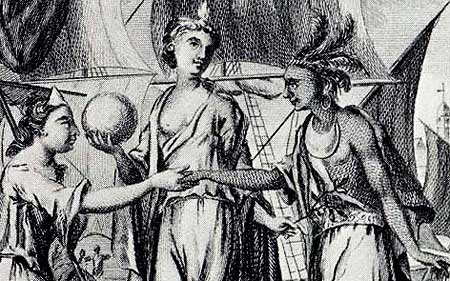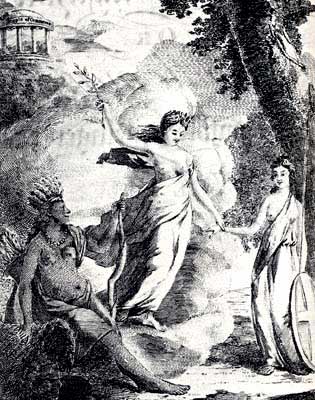|
The Olive Branch in Political Drawings
Before the Revolution

During the American Revolution, the olive branch appeared as a symbol in drawings and engravings that expressed the longing on both sides of the Atlantic for peace and the restoration of commerce between the estranged nations (personified as women).
Above is a detail from "Britain, America, at length be Friends," the January 1774 frontispiece of The London Magazine. Concord, the ancient Roman Goddess of Harmony and Peace, holds a globe and an olive branch between Britannia and America.
"Britain, America, at length be Friends,
Accept the terms which Concord recommends!
Be ye but steady to each others Cause,
Protect, defend, and not infringe the Laws;
Ye may together – come the World in Arms,
Bear the brunt Shock of hostile, dire alarms.
'Tis Peace, Trade, Navigation, will support
The poor with bread – in Dignity the Court.
Rush to each others arms, be firm and true;
One Faith, one Fame, one interest, makes the two."
A year later, in January 1775, the frontispiece of the same magazine published the below engraving: "Peace descends on a cloud from the Temple of Commerce," in which the Goddess of Peace brings an olive branch to America and Britannia.

"When fell Debate & civil Wars shall cease,
Commerce shall spread her sails o'er all the Seas,
England unrival'd in the liberal Arts,
Shall bear her Genius to remotest Parts,
Take to they Breast, America again,
Thou may'st defy imperious France & Spain."
Drawings of peace after the Revolution
|
